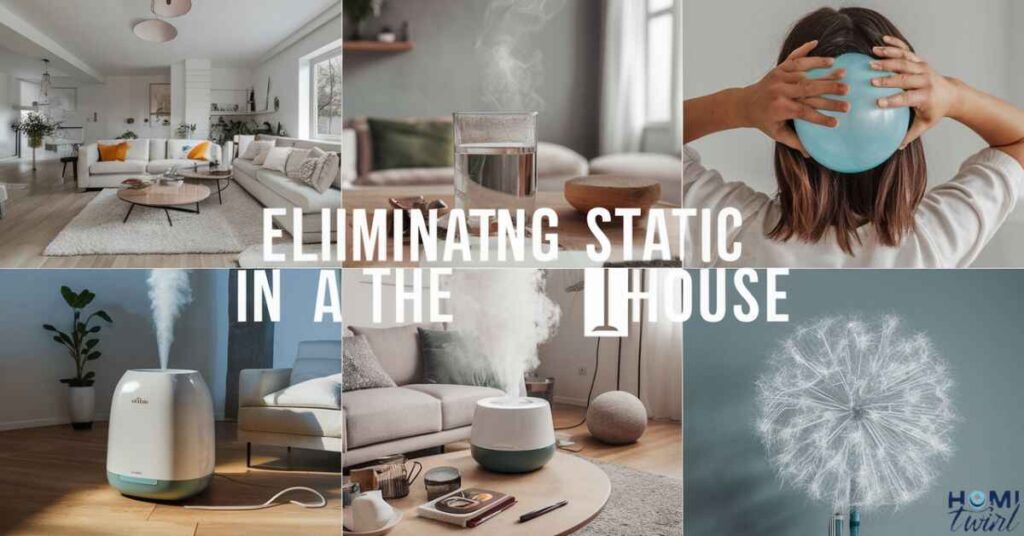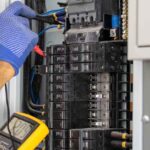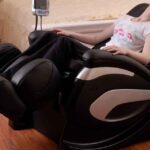To reduce static electricity in your home, start by increasing humidity with a humidifier. Anti-static products like sprays and dryer sheets can be used on surfaces.
Choose natural fiber clothing and furnishings over synthetic materials. Ensure electronic devices are properly grounded. Avoid synthetic fabrics which generate more static. Ground yourself by touching a grounded metal object before handling electronics.
Consider anti-static mats for flooring. Explore static eliminator devices for further reduction. These steps help eliminate static in your home.
Reducing Static at a Glance

Reduce static in your home by increasing humidity with a humidifier, using anti-static products on surfaces, and choosing natural fibers over synthetics. Ensure electronic devices are properly grounded and avoid synthetic fabrics.
Ground yourself before touching electronics and consider anti-static mats for flooring. Explore static eliminator devices for further reduction. These simple steps can help you tackle static electricity in your home effectively.
Add Moisture to Your Indoor Air
Increase indoor humidity with a humidifier to combat static electricity. Dry air exacerbates static buildup, making it more prevalent in your home. By introducing moisture into the air, you reduce the conditions that facilitate static electricity.
Read This Blog: WHAT SHOULD HUMIDITY BE IN HOUSE IN WINTER
This simple step can significantly decrease static shocks and clinginess in fabrics, creating a more comfortable environment for you and your family.
Cultivate Indoor Plants

Introducing indoor plants not only adds a touch of nature to your home but also helps combat static electricity. Plants release moisture through a process called transpiration, which increases humidity levels indoors.
By cultivating indoor plants, you can naturally boost humidity, reducing the occurrence of static electricity. Additionally, plants contribute to air purification and overall well-being, making them a beneficial addition to any home environment.
Also Read This Blog: WHAT IS A RAMBLER HOUSE
Remove Your Shoes & Socks
Taking off your shoes and socks can help reduce static electricity in your home. Shoes, especially those with rubber soles, can insulate you from the ground, allowing static electricity to build up.
By walking barefoot or in socks on surfaces like hardwood or tile floors, you allow any static charge to dissipate more easily. This simple habit can minimize static shocks and make your home environment more comfortable. Treat Your Carpet with Anti-Static Spray
Use Dryer Sheets on Your Furniture
Applying dryer sheets to your furniture is a practical way to reduce static electricity. Simply rub a dryer sheet over the surface of your upholstery, pillows, and carpets to help neutralize static buildup.
Dryer sheets contain ingredients that coat surfaces and prevent static cling, making them an effective solution for reducing static in your home. This quick and easy method can provide immediate relief from static shocks and help keep your furniture static-free.
Take Hot Baths & Showers
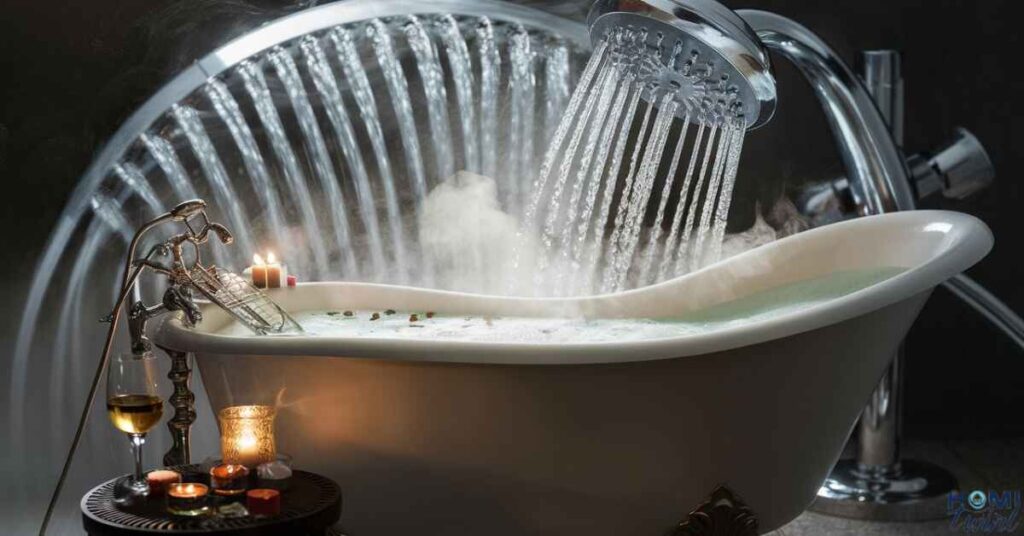
Hot baths and showers not only offer relaxation but can also help reduce static electricity in your home. The steam generated by hot water increases humidity levels in the air, which in turn minimizes static buildup on surfaces and fabrics.
How it Works
When you take a hot bath or shower, the warm water creates steam, which adds moisture to the air. This increased humidity helps to counteract the dry conditions that contribute to static electricity.
As a result, static charges are less likely to accumulate on surfaces, reducing the occurrence of static shocks and clinginess in fabrics.
Tips for Maximum Effectiveness
- opt for longer, hotter showers or baths to maximize steam production.
- Keep the bathroom door closed while showering or bathing to contain the steam and increase humidity levels.
- Consider adding essential oils or bath salts to enhance the experience while enjoying the benefits of reduced static electricity.
- Taking hot baths and showers is a simple yet effective way to combat static electricity in your home while indulging in some self-care and relaxation.
What Is Static Electricity?
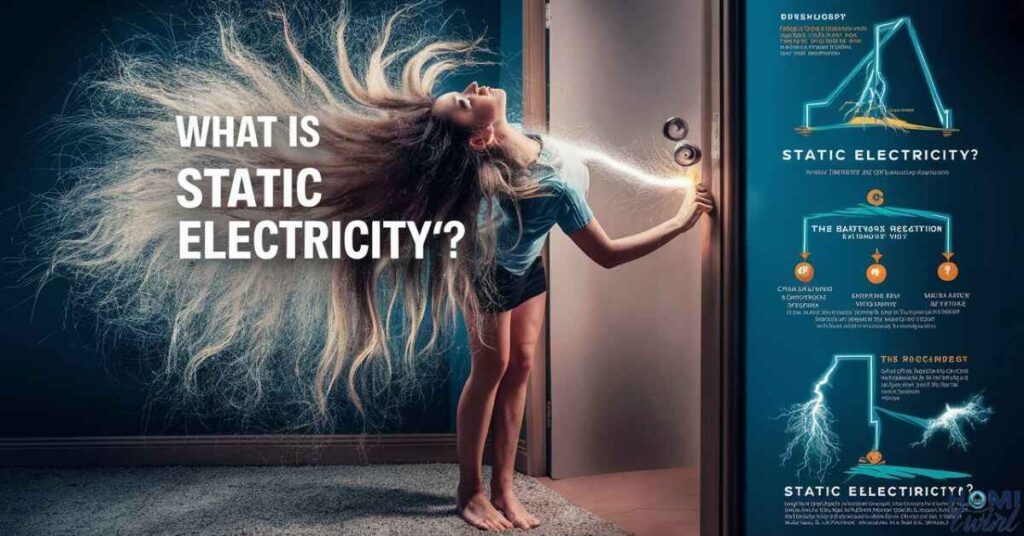
Static electricity is a common phenomenon characterized by the buildup of electric charge on the surface of objects.
It occurs when there is an imbalance of positive and negative charges, resulting in an electrical discharge when the charged object comes into contact with another object or surface.
How It Occurs
Static electricity occurs when certain materials rub against each other, causing the transfer of electrons from one material to another. This transfer creates an imbalance of positive and negative charges on the surfaces of the materials involved.
Objects with an excess of electrons become negatively charged, while those with a deficit of electrons become positively charged.
Effects and Examples
Static electricity can manifest in various ways, including.
- Static cling: When clothes or fabrics stick together due to static charge buildup.
- Static shocks: Sudden, mild electric shocks experienced when touching objects or people.
- Spark discharges: Visible sparks or crackling sounds produced when static charge is discharged between objects.
- Lightning: A natural form of static electricity discharge, occurring during thunderstorms when charged particles in the atmosphere create a visible electrical discharge.
Understanding static electricity helps us to manage its effects and mitigate potential hazards in our daily lives.
Add Humidification
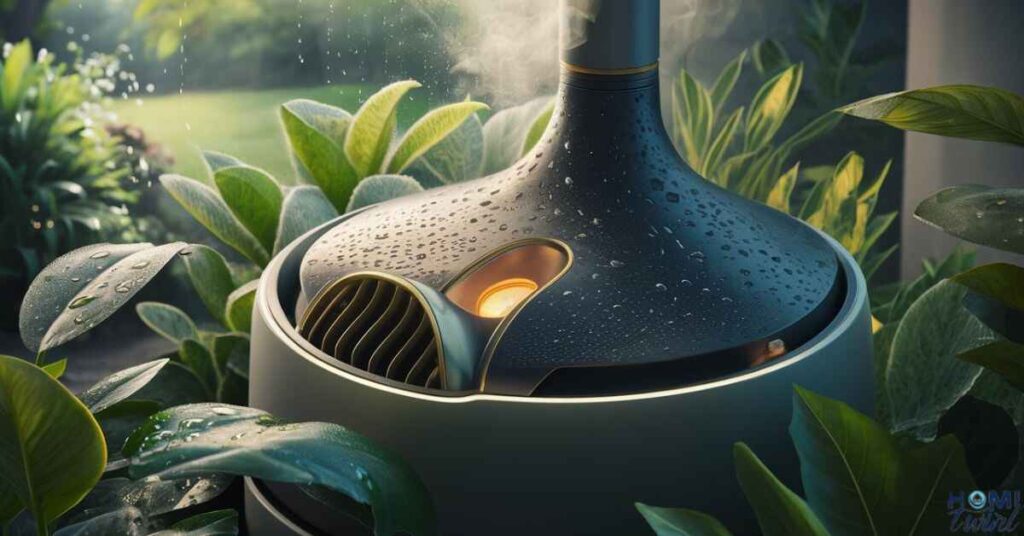
Humidification is the process of increasing the moisture content in the air, which can help alleviate various issues caused by dry air, including static electricity buildup in the home.
By introducing moisture into the air through humidification, you can create a more comfortable and balanced indoor environment.
How It Works
Humidification works by adding water vapor to the air, either through natural or mechanical means. This process increases the humidity level, which is the amount of moisture present in the air relative to its temperature.
In homes with low humidity levels, static electricity is more likely to occur due to the dryness of the air. By humidifying the air, you can reduce static electricity buildup on surfaces and fabrics.
Methods of Humidification
There are several methods of humidification that can be used to increase indoor humidity levels.
- Humidifiers: These are devices specifically designed to add moisture to the air and are available in various types, including evaporative, ultrasonic, and steam humidifiers.
- Natural Humidification: This involves utilizing natural methods to increase humidity, such as placing bowls of water near heat sources or using houseplants, which release moisture through transpiration.
- Whole-House Humidification Systems: These systems are integrated into HVAC (heating, ventilation, and air conditioning) systems to humidify the entire home.
Benefits of Humidification
- Reduces static electricity buildup on surfaces and fabrics.
- Helps alleviate dry skin, throat, and nasal passages.
- Improves indoor air quality and comfort.
- Preserves wooden furniture, musical instruments, and other sensitive items susceptible to damage from dry air.
- By incorporating humidification into your home, you can create a healthier and more pleasant living environment while effectively reducing static electricity-related issues.
Use Fabric Softener

Fabric softener is a laundry product designed to add a layer of lubrication to clothing fibers during the washing process. In addition to making fabrics feel softer and reducing wrinkles, fabric softener can also help minimize static electricity buildup in your clothes.
Fabric softener works by coating the fibers of clothing with a thin layer of lubricant, typically composed of chemicals called cationic surfactants. This coating helps to reduce friction between the fabric fibers, preventing them from rubbing against each other and generating static electricity during wear.
Application
Fabric softener can be added to the rinse cycle of your washing machine along with your laundry detergent. Alternatively, some washing machines have built-in compartments for fabric softener that automatically dispense it during the rinse cycle.
Follow the manufacturer’s instructions for the correct amount of fabric softener to use based on the size of your load and the water hardness in your area.
Benefits of Using Fabric Softener
- Softens fabrics and reduces stiffness.
- Minimizes wrinkles and makes ironing easier.
- Helps prevent static cling and reduces static electricity buildup in clothing.
- Adds a fresh scent to laundry.
- Extends the life of clothing by reducing wear and tear on fabric fibers.
By incorporating fabric softener into your laundry routine, you can enjoy softer, smoother fabrics and reduce static electricity issues in your clothing, contributing to a more comfortable and pleasant wearing experience.
Carry Something Metal
Carrying something metal with you can help dissipate static electricity buildup in your body, reducing the likelihood of experiencing static shocks when touching objects or surfaces.
This simple practice is effective in grounding excess charge and promoting a more comfortable environment.
Metal objects, such as keys, coins, or jewelry, conduct electricity and provide a path for excess charge to flow from your body to the environment.
When you carry a metal object, it helps to discharge any static electricity that has accumulated in your body, preventing it from causing static shocks when you come into contact with other objects.
Practical Tips
- Keep a small metal object, such as a keychain or coin, in your pocket or purse for easy access.
- Touch the metal object periodically, especially before touching objects or surfaces that are prone to static buildup, such as door handles or electronic devices.
- Choose metal objects made of materials like stainless steel or copper, which are good conductors of electricity.
Benefits
- Reduces the likelihood of experiencing static shocks.
- Provides a simple and convenient way to discharge static electricity from your body.
- Helps maintain a more comfortable and static-free environment, particularly in dry conditions.
- Incorporating the practice of carrying something metal with you can be an effective strategy for managing static electricity buildup and promoting a more pleasant and hassle-free daily experience.
Clean Floors
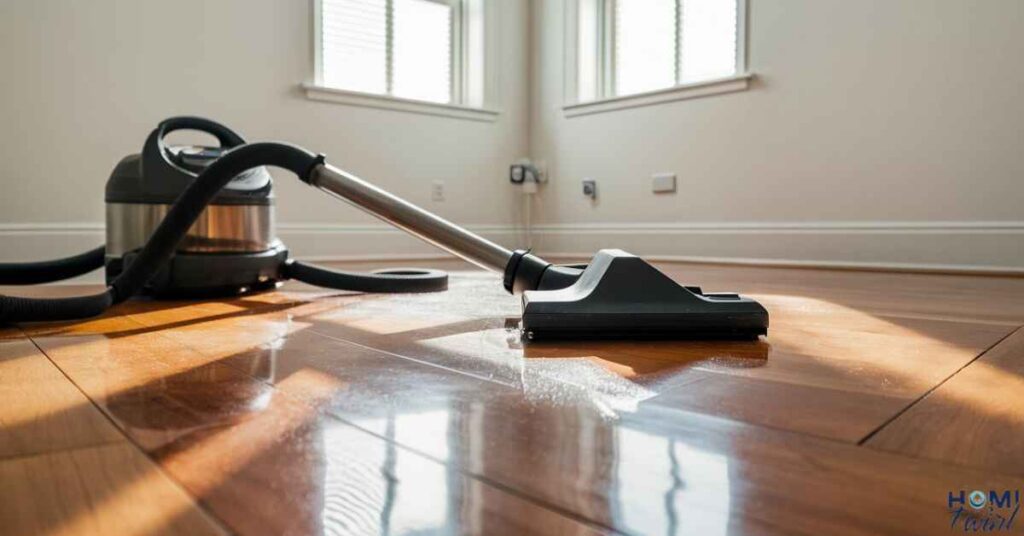
Regularly cleaning your floors is a practical way to reduce static electricity buildup in your home. Dust, dirt, and debris can accumulate on floors, contributing to static charges.
By keeping your floors clean, you can minimize the factors that lead to static electricity and create a more comfortable living environment.
Cleaning floors removes dust, dirt, and other particles that can act as insulators, allowing static electricity to accumulate.
Vacuuming, sweeping, or mopping effectively removes these contaminants, reducing the likelihood of static buildup on surfaces. Additionally, using cleaning products specifically designed to neutralize static can further enhance the effectiveness of floor cleaning.
Practical Tips
- Vacuum carpets and rugs regularly to remove dust and debris trapped in fibers.
- Sweep hard floors to collect dirt and particles that can contribute to static electricity.
- Mop hard floors with a damp mop to remove residues and maintain optimal humidity levels.
- Use anti-static floor cleaners or treatments to help neutralize static electricity on floors.
Benefits
- Reduces static electricity buildup on floors and surfaces.
- Improves indoor air quality by removing dust and allergens.
- Enhances the appearance and longevity of flooring materials.
- Creates a cleaner and more comfortable living environment for you and your family.
- By incorporating regular floor cleaning into your household routine, you can effectively minimize static electricity buildup and enjoy a cleaner, more pleasant home environment.
Frequently asked question
What causes static electricity in the home?
Static electricity occurs due to an imbalance of positive and negative charges on surfaces, often from friction between materials like clothing and carpets.
How does humidity affect static electricity?
Low humidity levels contribute to static buildup, so increasing indoor humidity with a humidifier can help reduce static in the house.
Can using fabric softener help with static electricity?
Yes, using fabric softener in laundry can coat fabric fibers, reducing friction and minimizing static cling in clothing and linens.
Are there specific materials that contribute to static buildup?
Synthetic materials like polyester are more prone to static electricity, so opting for natural fibers like cotton or wool can help minimize static in the house.
Can I use anti-static products on surfaces to reduce static?
Yes, anti-static sprays or dryer sheets can be applied to surfaces like carpets and upholstery to help neutralize static charges.
Does grounding myself help reduce static shocks?
Yes, touching a grounded metal object before touching sensitive electronics can discharge static buildup in the body, reducing the likelihood of static shocks.
Is there a way to reduce static in the air?
Yes, using a humidifier to increase indoor humidity levels can help reduce static electricity in the air and on surfaces throughout the house.
Can static electricity damage electronic devices?
While small static discharges are usually harmless, larger shocks can potentially damage sensitive electronics, so it’s important to handle them with care and discharge static before touching them.
Conclusion
managing static electricity in the home involves a combination of strategies to reduce its occurrence and impact. Increasing indoor humidity with a humidifier, using fabric softener in laundry, and opting for natural fibers over synthetic materials can help minimize static buildup on surfaces and clothing.
Employing anti-static products on surfaces and grounding oneself before handling electronics can further mitigate static shocks. Regular cleaning of floors and maintaining proper ventilation also contribute to reducing static electricity in the house. By implementing these measures, you can create a more comfortable and static-free living environment for you and your family.

